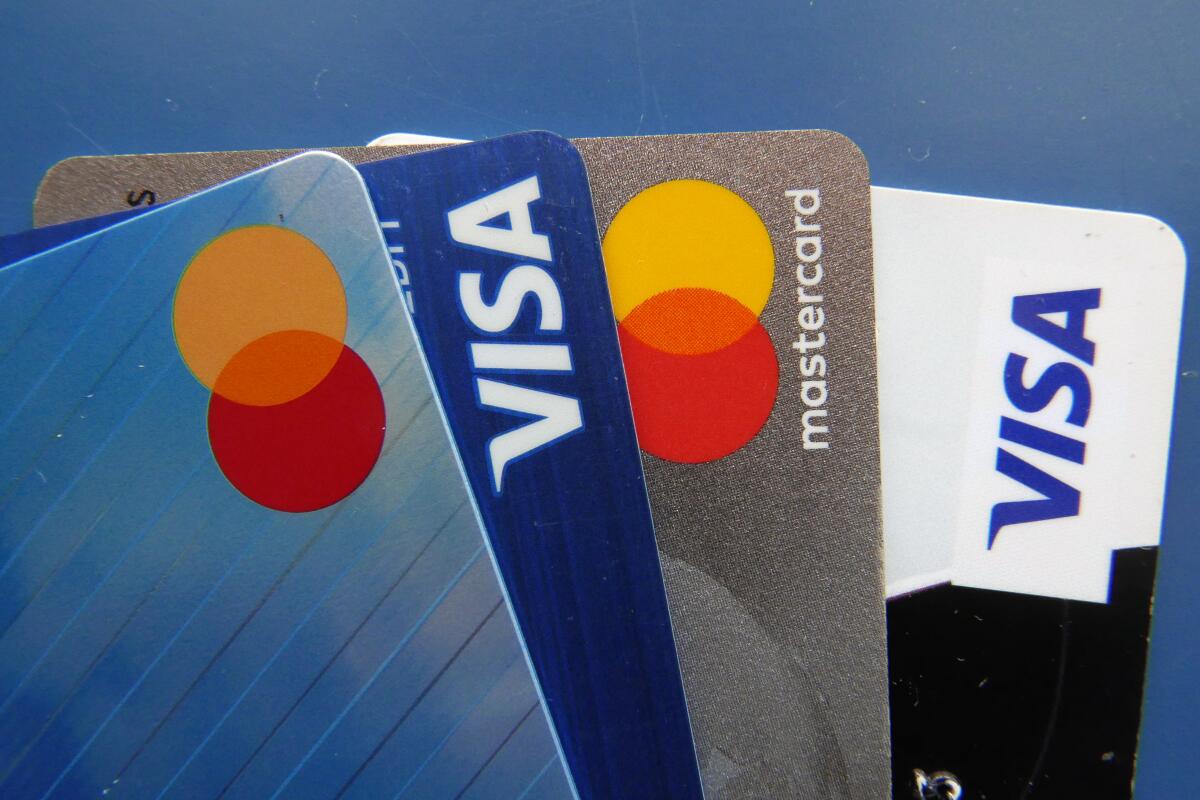What the Fed rate increase means for your credit card bill

- Share via
The Federal Reserve raised its key rate by another quarter of a point Wednesday, bringing it to the highest level in 15 years as part of an ongoing effort to ease inflation by making borrowing more expensive.
If you have money to save, you’ll probably earn a bit more interest on it, but the increase will make it even costlier to borrow for homes, autos and other purchases. The interest rate increase comes at a time when credit card debt is at record levels.
Here’s what the increase means for your credit card bill and what you can do if you’re carrying debt:
How does the Fed decision affect credit card debt?
The Federal Reserve doesn’t directly dictate how much interest you pay on your credit card debt. But the Fed’s rate is the basis for your bank’s “prime rate.” In combination with other factors, such as your credit score, the prime rate helps determine the annual percentage rate, or APR, on your credit card.
The latest increase will probably raise the APR on your credit card 0.25%. So, if you have a 20.4% rate, which is the average, according to Bankrate, it might increase to 20.65%.
If you don’t carry a balance from month to month, the APR is less important.
But if, for example, you have a $4,000 credit balance and your interest rate is 20%, if you only make a fixed payment of $110 per month, it would take you a bit under five years to pay off your credit card debt and you would pay approximately $2,200 in interest.
If your APR increases by a percentage point, paying off your balance would take two months longer and cost an additional $215.
How do I find out the APR on my credit card?
Courtney Alev, consumer financial advocate at Credit Karma, said that knowing the APR on your card is an important first step for anyone looking to get out of credit card debt.
“If you are carrying a balance month to month, that balance just got more expensive,” she said.
To figure out your APR, you can log in to your online banking account, look at your financial statement, or call the number on the back of your credit card, Alev says.
What do I do if my APR is high?
After that, both Alev and analyst Greg McBride of Bankrate advise signing up for a credit card that offers a zero percent interest or low interest balance transfer promotion. These allow you to transfer your higher interest credit card debt to a low interest credit card, and some offer promotions up to 21 months.
Banks do often charge a flat fee, such as 3% of the balance transferred.
“It doesn’t make sense to pay 20% in interest just to get 2% in cash back,” McBride said. “Put your interest rate first and pursue rewards once you’re debt-free.”
Other debt payoff strategies include taking a low-rate personal loan as a form of consolidation and pursuing a debt management plan offered by a reputable nonprofit credit counseling agency such as Money Management International, he said.
How can I reduce my credit card debt?
If your income just covers your necessities, reducing credit card debt can be challenging. Elena Pelayo, an educator at How Money Works, a financial literacy organization, recommends that even if you live paycheck to paycheck, you might want to add at least $10 above the minimum payment of your credit card with the highest interest rate.
And if you can afford it, she recommends paying 10% more than the minimum payment per month.
A well-known payment method is the “debt snowball” strategy, in which you pay down your debts from smallest to largest, to build momentum and good habits. Once the smaller debts are paid off and you have built a habit of paying off debt, the money you were using every month on those smaller debts can then go toward larger debts. NerdWallet offers a calculator to use this method.
Another small way to tackle debt is the Consumer Financial Protection Bureau’s recommendation to “use cash when it’s under $20” to avoid overspending on your credit card.
More to Read
Inside the business of entertainment
The Wide Shot brings you news, analysis and insights on everything from streaming wars to production — and what it all means for the future.
You may occasionally receive promotional content from the Los Angeles Times.










